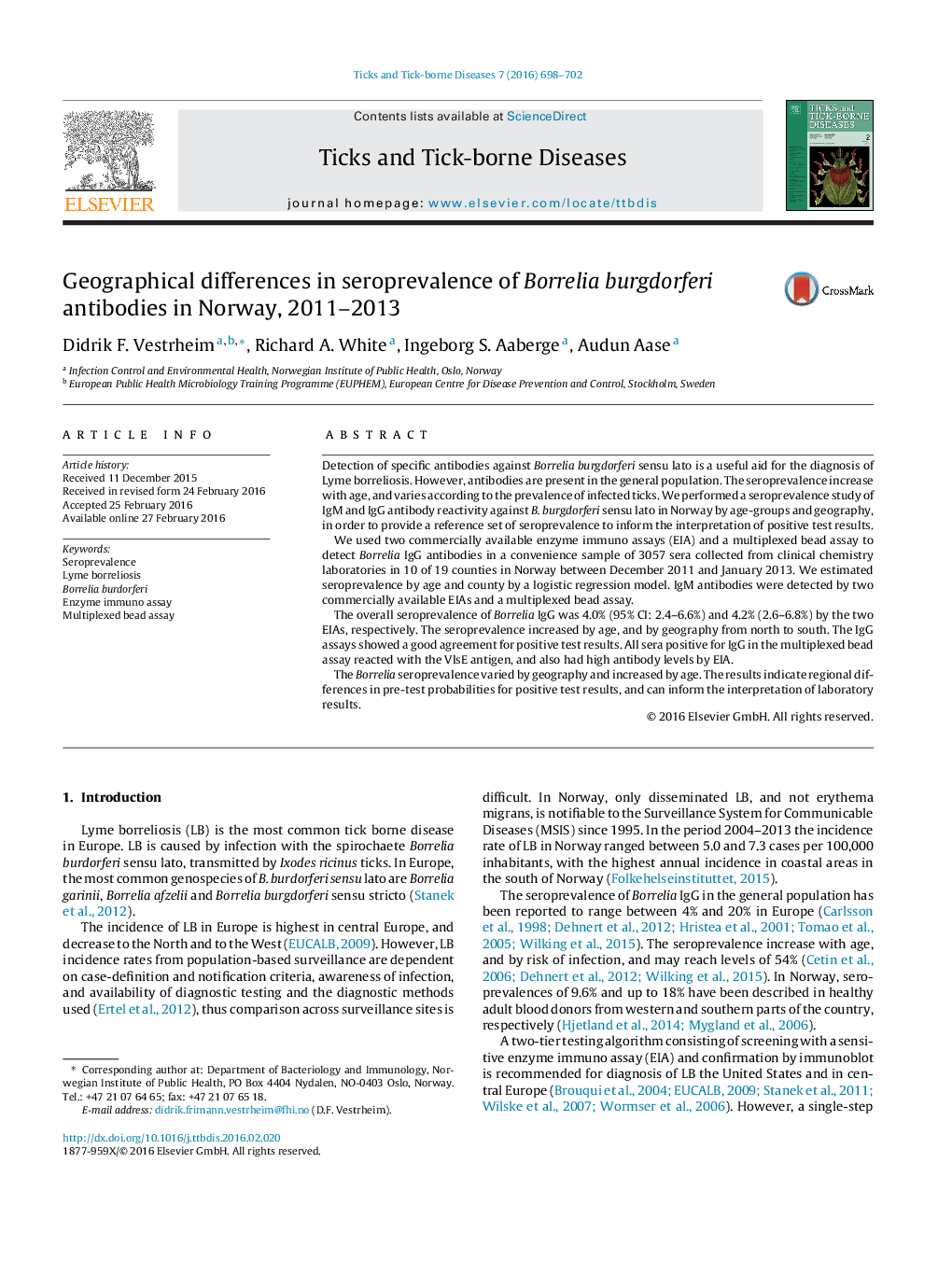| Article ID | Journal | Published Year | Pages | File Type |
|---|---|---|---|---|
| 5546376 | Ticks and Tick-borne Diseases | 2016 | 5 Pages |
Detection of specific antibodies against Borrelia burgdorferi sensu lato is a useful aid for the diagnosis of Lyme borreliosis. However, antibodies are present in the general population. The seroprevalence increase with age, and varies according to the prevalence of infected ticks. We performed a seroprevalence study of IgM and IgG antibody reactivity against B. burgdorferi sensu lato in Norway by age-groups and geography, in order to provide a reference set of seroprevalence to inform the interpretation of positive test results.We used two commercially available enzyme immuno assays (EIA) and a multiplexed bead assay to detect Borrelia IgG antibodies in a convenience sample of 3057 sera collected from clinical chemistry laboratories in 10 of 19 counties in Norway between December 2011 and January 2013. We estimated seroprevalence by age and county by a logistic regression model. IgM antibodies were detected by two commercially available EIAs and a multiplexed bead assay.The overall seroprevalence of Borrelia IgG was 4.0% (95% CI: 2.4-6.6%) and 4.2% (2.6-6.8%) by the two EIAs, respectively. The seroprevalence increased by age, and by geography from north to south. The IgG assays showed a good agreement for positive test results. All sera positive for IgG in the multiplexed bead assay reacted with the VlsE antigen, and also had high antibody levels by EIA.The Borrelia seroprevalence varied by geography and increased by age. The results indicate regional differences in pre-test probabilities for positive test results, and can inform the interpretation of laboratory results.
